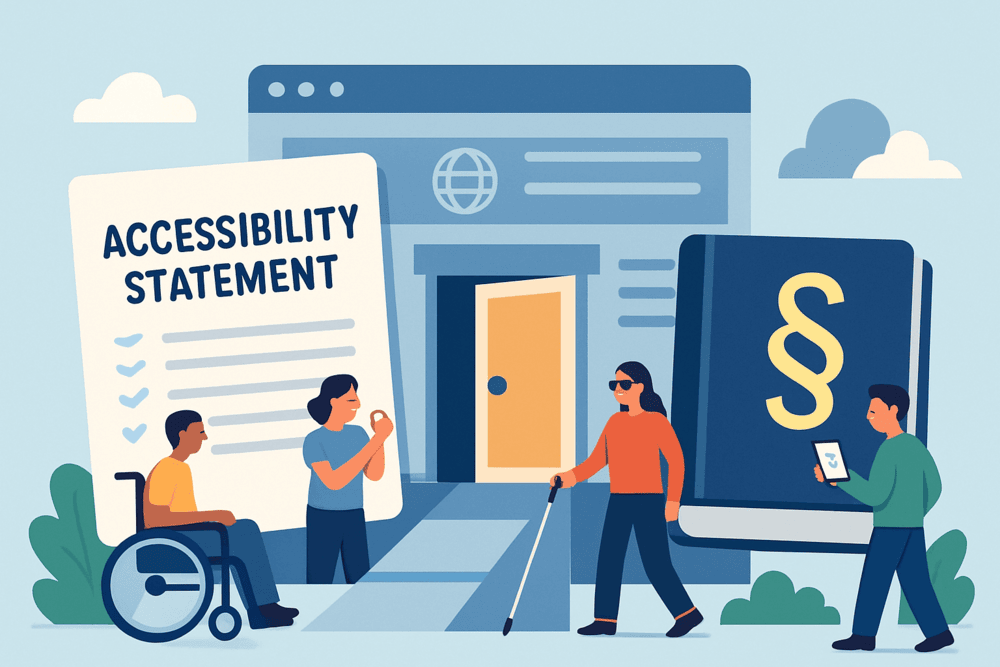An accessibility statement explains a website’s current level of compliance with accessibility standards, outlines planned improvements, and tells users how to get support if they encounter barriers.
While legal requirements vary by country and industry, accessibility statements are increasingly expected. They are not just a formality, but a public commitment to inclusivity.
An accessibility statement is more than a legal document, it’s a public commitment to inclusivity.
Why do accessibility statements matter?
Even if not legally required, an accessibility statement offers clear benefits:
- Builds trust – shows users you take accessibility seriously.
- Improves experience – sets expectations for what works and what doesn’t.
- Strengthens reputation – positions your organization as inclusive and responsible.
- Shows transparency – acknowledges progress and limitations.
- Provides support – gives users a way to report issues.
- Reduces legal risk – especially if serving international audiences where accessibility laws may be different to those in your country.
In short: having an accessibility statement is good business, good practice, and good ethics.
How to write an accessibility statement
Before an accessibility statement can be written, you must know the state of compliance for the website. This is achieved during an accessibility audit, usually conducted by accessibility experts with a combination of extensive manual testing and automated tools.
Note: If you’d like to read more on why automated tools alone won’t suffice, read my co-blogger’s post Common mistake: Not performing manual checks and relying on only automated tools
The audit report is long and technical, for internal use. The accessibility statement is the plain-language, public version, typically including:
- Commitment – your organization’s values and goals.
- Compliance status – which guidelines you follow (e.g. EN 301 549, WCAG 2.1 AA) and how well you meet them.
- Known limitations – barriers still present, explained simply.
- Planned improvements – updates and timelines.
- Feedback mechanism – how users can report issues.
- Enforcement information – how unresolved complaints can be escalated to the relevant supervisory authority.
Legal requirements for accessibility statements may vary, so make sure to adhere to relevant legislation.
Useful links
- W3C Accessibility Statement Generator – a helpful tool
- A list of accessibility statements by Codeberg – see how others have written theirs


Leave a Reply